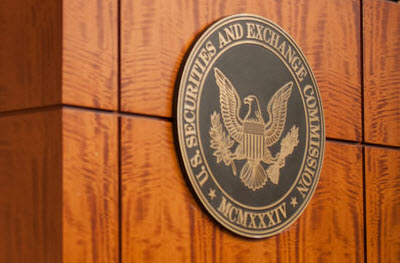Securities Law Changes
New changes to the law could mean new client service opportunities
The Securities and Exchange Commission (SEC) has issued a No Action Letter that allows unlicensed professionals to receive commissions for the sale of privately held securities in a sales transaction.
The Securities Act of 1934 has been significantly changed for the first time in 80 years. This change has created an opportunity for CPAs, valuation professionals, and other consultants to offer new services to their clients and earn substantial fees in the process.
On January 31, 2014, the Securities and Exchange Commission (SEC) issued a No Action Letter (NAL) that permits anyone, such as a CPA or valuation professional, to receive fees in connection with the sale of a client’s company. The sale of stock in a privately held company is considered a securities transaction and, prior to this NAL, only a financial industry regulatory authority (FINRA)-_ licensed broker-dealer could participate in a commission for the sale of those securities. In addition, broker-dealers were prohibited from sharing their fees with the non-licensed professional who might have referred the transaction in the first place. This NAL has changed the rules: non-licensed professionals now have an opportunity to maintain their client relationships, contribute their services to the transaction, and directly receive success fees (commissions) in the process. The SEC refers to professionals who assist in a transaction involving privately held securities as “M&A brokers.”
The SEC’s NAL provides guidance to these unlicensed M&A brokers as to what types of transactions are allowed. In general, the securities transaction must be of a privately held seller, and the buyer, or buyers, must be in a position of control and actively involved in the business following the transaction. The SEC’s letter defines control as having 25 percent or more voting rights and states that “actively involved” in the company’s operation can be demonstrated through the power to elect executives and approve annual budgets. There are also other stipulations for the M&A broker found in the SEC NAL.
While this NAL provides the regulatory authority to serve as an M&A broker, many professionals may feel uncomfortable following its guidance due to state law concerns, including real estate licensing requirements, if the firm anticipates brokering the transaction. Most states will also have separate securities laws, and many state securities laws (Blue Sky laws) will follow federal law and have not adopted the SEC’s latest NAL guidance. Therefore, while the SEC is no longer planning to take action against unlicensed professionals in these transactions, each state may still take issue with the practice, until it adopts the SEC’s position, or if federal laws are changed and the state therefore adopts the federal law.
In addition to the NAL, a federal bill (HR 2274) has passed Congress, and its counterpart (S. 1923) is currently being reviewed by the Senate. If passed, this law would actually amend the Securities Act of 1934 and would essentially confirm the SEC’s guidance from their NAL into law. There are some differences found in the bill(s) that are working their way through Congress, most notably a limit on the size of the selling company has been proposed at $25 million of earnings before interest, taxes, depreciation, and amortization (EBITDA) or $250 million of revenue. Nevertheless, if the current congressional bill is made into law, it will largely mirror the results of the NAL for most small and mid-size companies under $250 million. Should the federal bill pass, it would create a permanent change to federal law that could also be more readily adopted by the state securities commissions.
Whether a financial professional wishes to follow the current SEC NAL, or if they wait for the current legislation in Congress to pass, those who currently have privately held client relationships may find themselves with an opportunity to participate as an M&A broker in the future. Many CPAs and valuation professionals are knowledgeable about the technical aspects of privately held sale transactions. Perhaps more importantly, lower, middle market, privately held company sellers often look to their CPA or valuation professional for guidance and advice when it comes to selling. So, these professionals will inevitably be presented with an opportunity to participate in the sale, and may now have an opportunity to be compensated in a way previously not allowed.
Those who wish to learn more about the M&A process or are interested in becoming an M&A broker should consider reading the book Middle Market M&A. It is also available on the NACVA Member Bookstore on Wiley.com. Members receive a 30 percent discount plus free ground shipping on their order. There are some similarities between business valuation and M & A transactions, but there are important differences that warrant additional training.
Christian W. Blees, CPA/ABV, CM&AA,began his career with a 30-person CPA firm, BiggsKofford, located in Colorado Springs, Colorado. In 2004, Chris launched the firm’s M&A practice, known as BiggsKofford Capital. In 2007, he was also appointed as the CPA firm’s managing partner.
As a result of Chris’ direction, BiggsKofford has become a leader in the M&A sector, involving the firm in over 300 merger, acquisition, and sale transactions. Chris is also active nationally in the M&A profession and was instrumental in developing the M&A certification curriculum for the Alliance of Merger & Acquisition Advisors (AM&AA). He co-authored Middle Market M&A, published by Wiley Finance in 2012. He currently sserves on the board of the AM&AA and is the lead instructor for the Certified Merger & Acquisition Advisor (CM&AA) designation. Chris is a CPA/ABV, CM&AA, and holds Series 7 and 79 investment banking licenses. You can reach him at blees@biggskofford.com.










